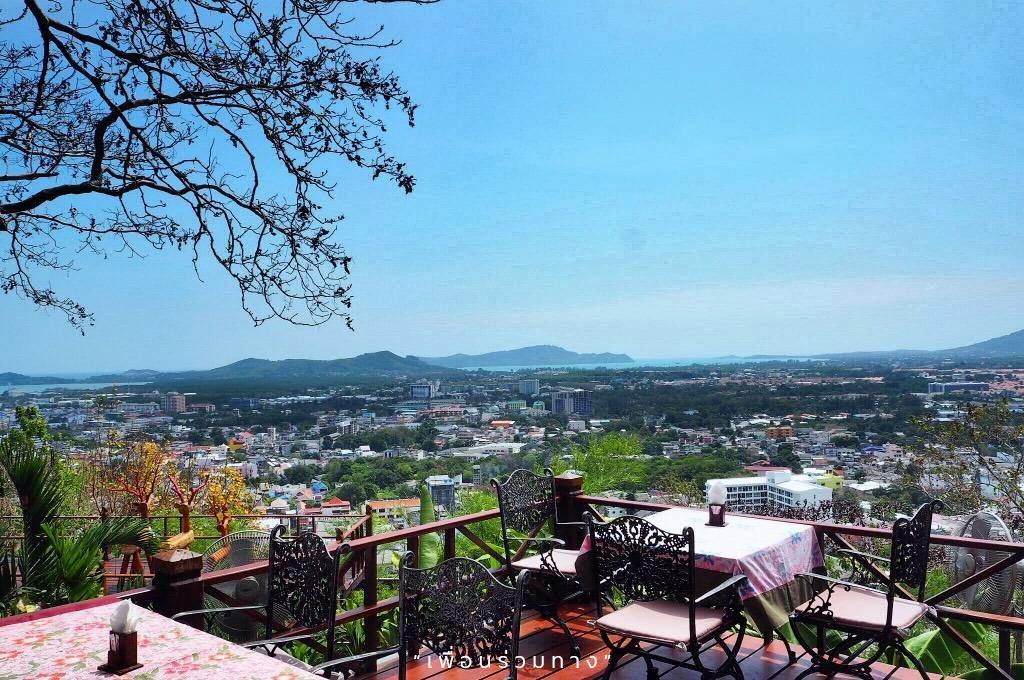Phuket old town deserves more attention. It is in fact the beating heart of Phuket if you’re interested in the cultural aspects of this world-renowned beach resort. You will find the historic quarter even more charming these days thank to the removal of the utility cables from overhead to underground.
.
Although most foreigners visit Phuket for its beaches, you won’t be disappointed by what the town can offer culturally. . Phuket’s old quarter is pretty small and all our attractions are within walking distance of each other. Dress to walk while also to look great on social media at the same time! You can stop to regain lost energy along the way at one of the many chic cafes and restaurants.
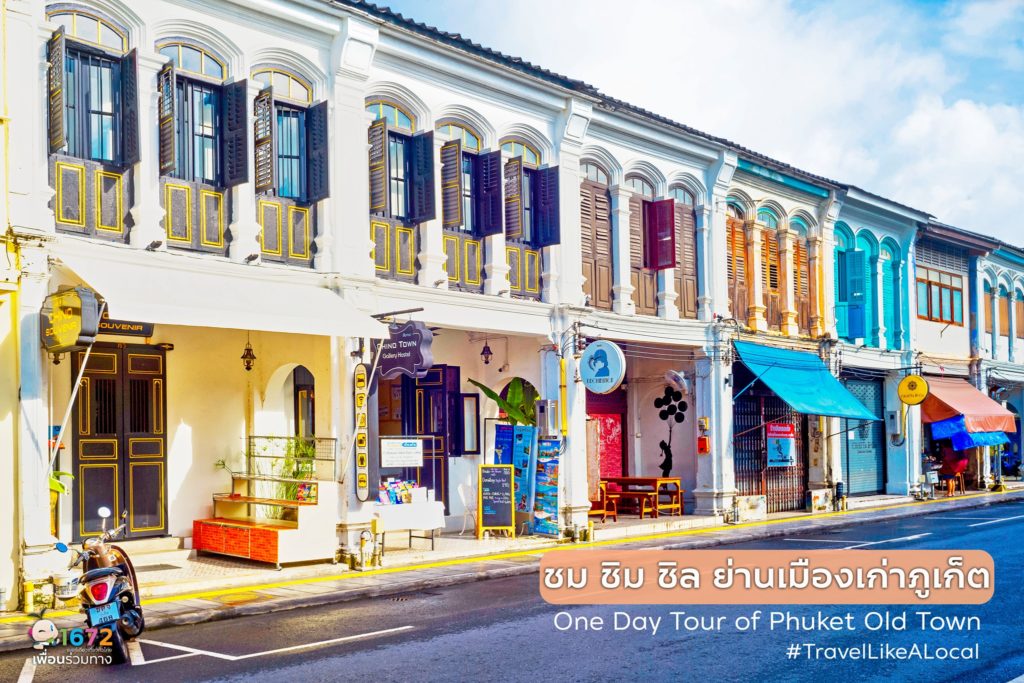
Itinerary
- Step in the Peranakannitat Museum to learn about a sub-culture heritage.
- Visit the well-conserved Saeng Tham Chinese Shrine.
- Learn more about the Chinese settlers at the Phuket Thai Hua Museum.
- Lunch at Ran Mi Gola – Go La Hokkien Fried Noodle.
- Explore old buildings and street art.
- Have a cup of tea at i46 Old Town Café.
- Enjoy dinner at Tunk-ka Cafe on Khao Rang.
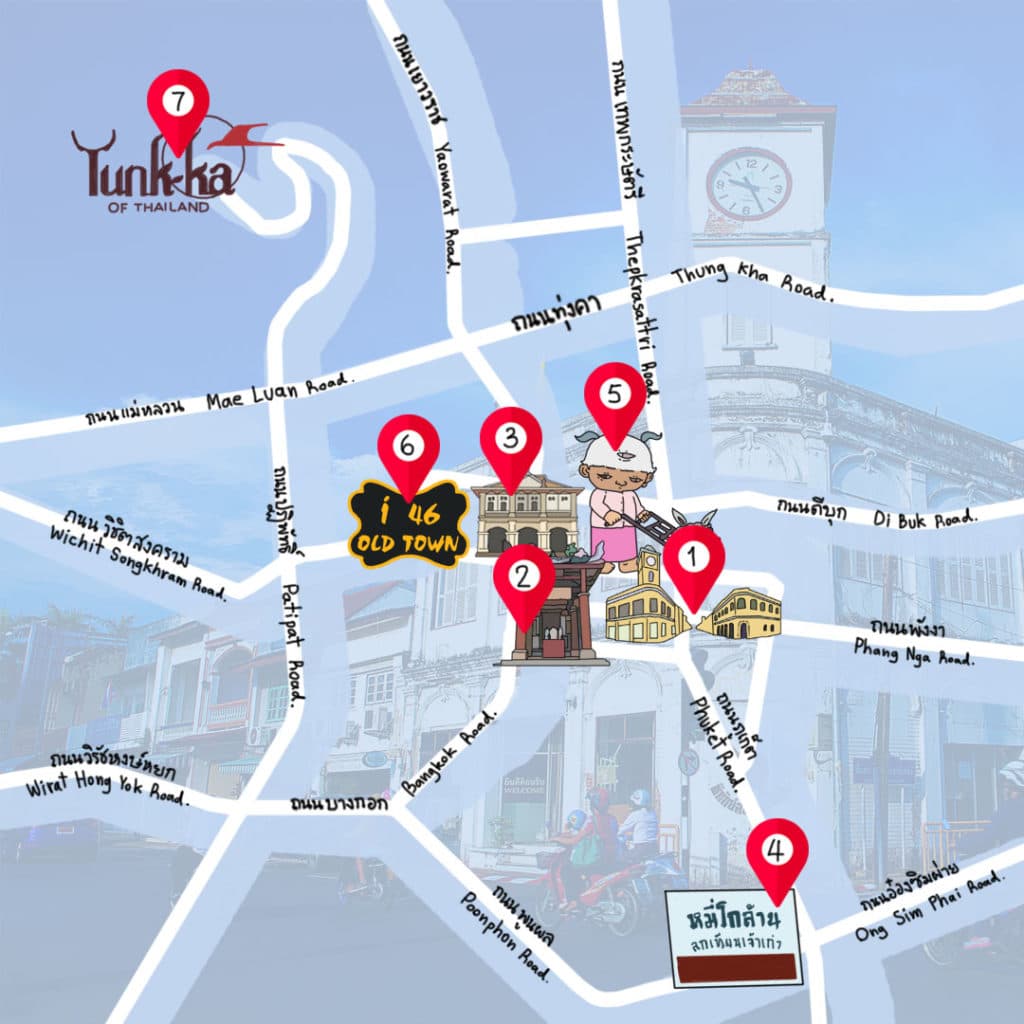
![]() Peranakannitat Museum
Peranakannitat Museum ![]()
The Museum’s building itself is enough to warrant your time. Originally built in 1909 as the Chartered Bank, the Museum displays the stories of the “Peranakan”, the name given to those born of interracial marriages – mostly Chinese or Indian men with local women of the Malay Peninsula. The Peranakan settled down in Malaysia, Singapore, Indonesia, and the South of Thailand, especially Phuket.
Stop by the Museum for an overview of the rich heritage of Phuket’s Baba and Nyonya, as the Peranakan are called locally.
-
 Phang Nga Road, Tambon Talat Yai, Amphoe Mueang, Phuket
Phang Nga Road, Tambon Talat Yai, Amphoe Mueang, Phuket -
 Open Tuesday – Sunday (closed Mondays) from 9:00 a.m. – 4:30 p.m.
Open Tuesday – Sunday (closed Mondays) from 9:00 a.m. – 4:30 p.m.  0 94807 7873
0 94807 7873 https://goo.gl/maps/B1Cu6CNPJgRd1riXA
https://goo.gl/maps/B1Cu6CNPJgRd1riXA
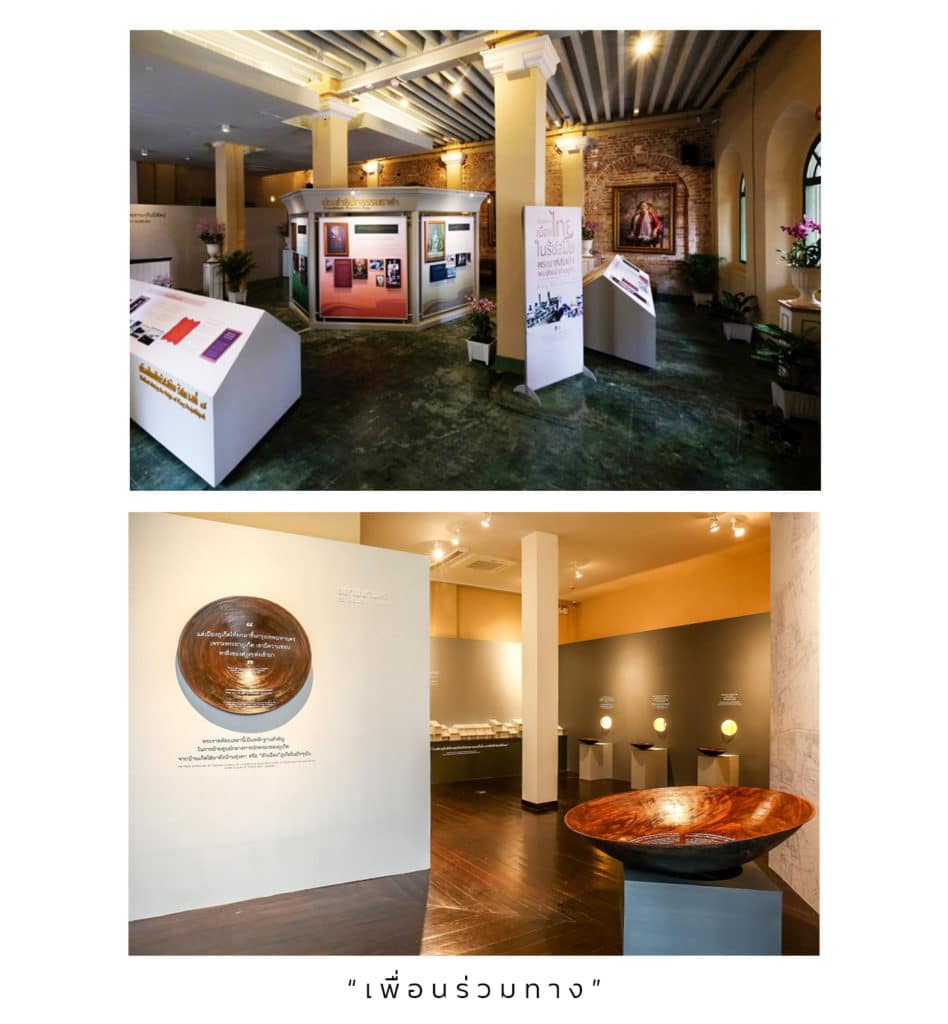
![]() Saeng Tham Shrine – Shrine of the Serene Light
Saeng Tham Shrine – Shrine of the Serene Light ![]()
Saeng Tham Shrine dates back more than 130 years. The small yet beautiful place of worship was founded by an ancestor of the Tantaves Family. You can see its distinctive architectural design commonly found in Hokkien-Chinese shrines; such as, the upward-curving ridge-shaped roof and colourful sculpture decoration.
The Shrine has been honoured with the Architectural Conservation Award by the Association of Siamese Architects.
-
 9/5 Phang Nga Road, Tambon Talat Yai, Amphoe Mueang, Phuket
9/5 Phang Nga Road, Tambon Talat Yai, Amphoe Mueang, Phuket -
 Open daily from 8:00 a.m. – 6:00 p.m.
Open daily from 8:00 a.m. – 6:00 p.m. -
 0 7635 4536
0 7635 4536 -
 https://goo.gl/maps/gt69LVNjM8M4T3LJ8
https://goo.gl/maps/gt69LVNjM8M4T3LJ8
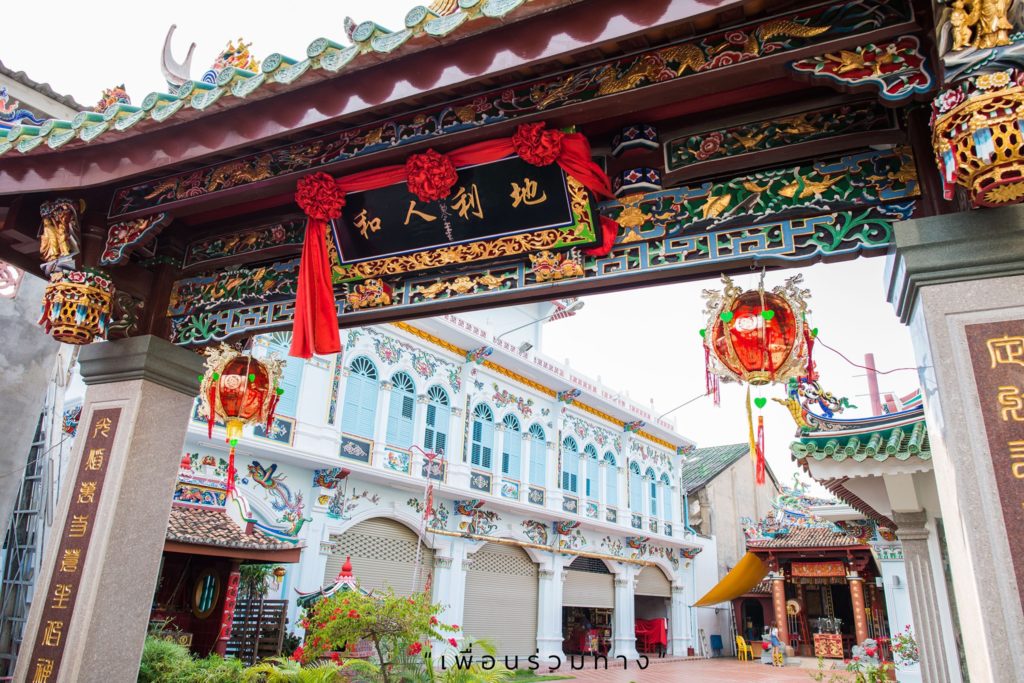
![]() Phuket Thai Hua Museum
Phuket Thai Hua Museum ![]()
Before its present status as a premier beach resort, Phuket made its fortune from tin mining. This attracted a huge influx of Chinese immigrants whose stories you can learn by visiting the Phuket Thai Hua Museum.
The Museum’s building was originally a Chinese language school built in 1934.
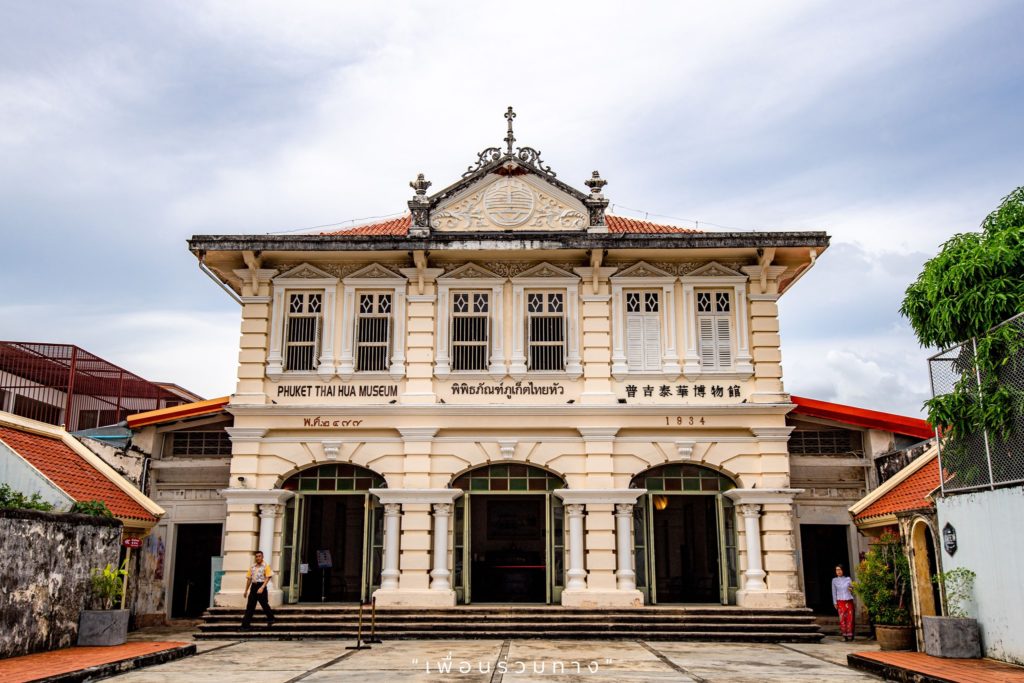
The 2-storey museum features 14 rooms exhibiting the culture and ways of life of the Chinese settlers.
Its exhibits are interesting and well-displayed. History buffs will enjoy the experience.
 Krabi Road, Tambon Talat Nuea Amphoe Mueang, Phuket
Krabi Road, Tambon Talat Nuea Amphoe Mueang, Phuket  Open daily from 9:00 a.m. – 5:00 p.m.
Open daily from 9:00 a.m. – 5:00 p.m.  0 7621 1224
0 7621 1224  https://goo.gl/maps/Akm6jbXjKtrfBzbS6
https://goo.gl/maps/Akm6jbXjKtrfBzbS6
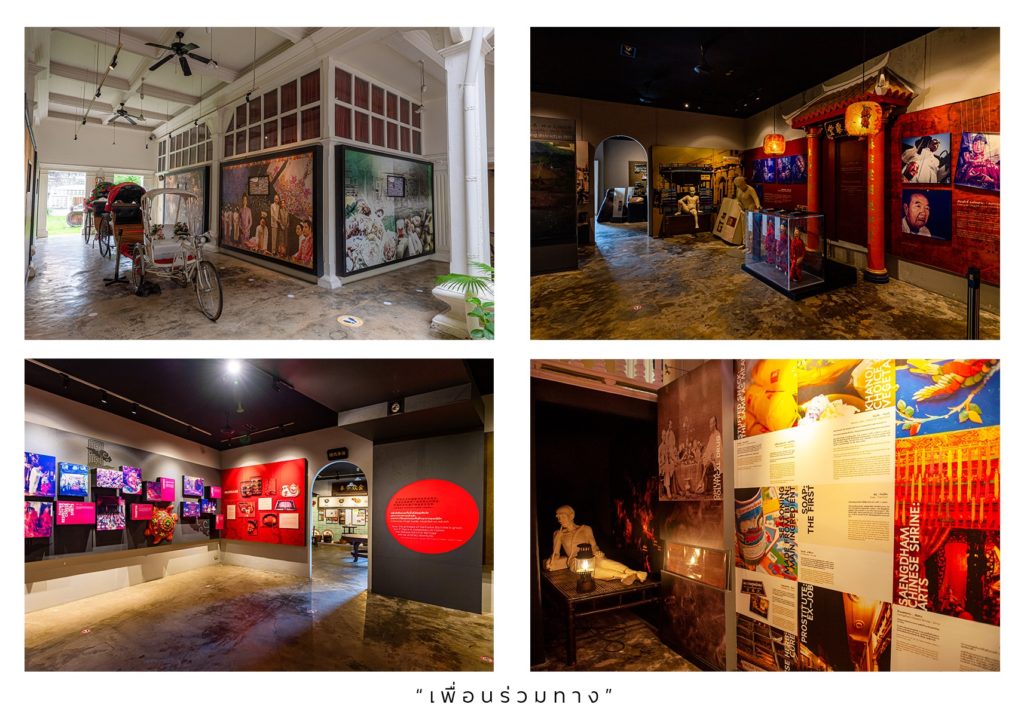
![]() Ran Mi Gola – Go La Hokkien Fried Noodle
Ran Mi Gola – Go La Hokkien Fried Noodle ![]()
Hokkian-style dishes are prevalent as Phuket is home to a large community of Hokkien Chinese descendants.
One of the best places for Hokkien fried noodles, Go La was in “The Plate – Good cooking list” of the Michelin Guide 2019 and 2020. The present owner is the 3rd generation of the founding family and maintains the tradition of cooking on charcoal burners to achieve the smoky flavour.
 11 Kra Road, Tambon Talat Yai, Amphoe Mueang, Phuket
11 Kra Road, Tambon Talat Yai, Amphoe Mueang, Phuket  Open Tuesday-Sunday (closed Mondays) from 11:00 a.m. – 9:00 p.m.
Open Tuesday-Sunday (closed Mondays) from 11:00 a.m. – 9:00 p.m.  0 7663 0409
0 7663 0409  https://goo.gl/maps/Xvt5R66vdo3TJGQs8
https://goo.gl/maps/Xvt5R66vdo3TJGQs8
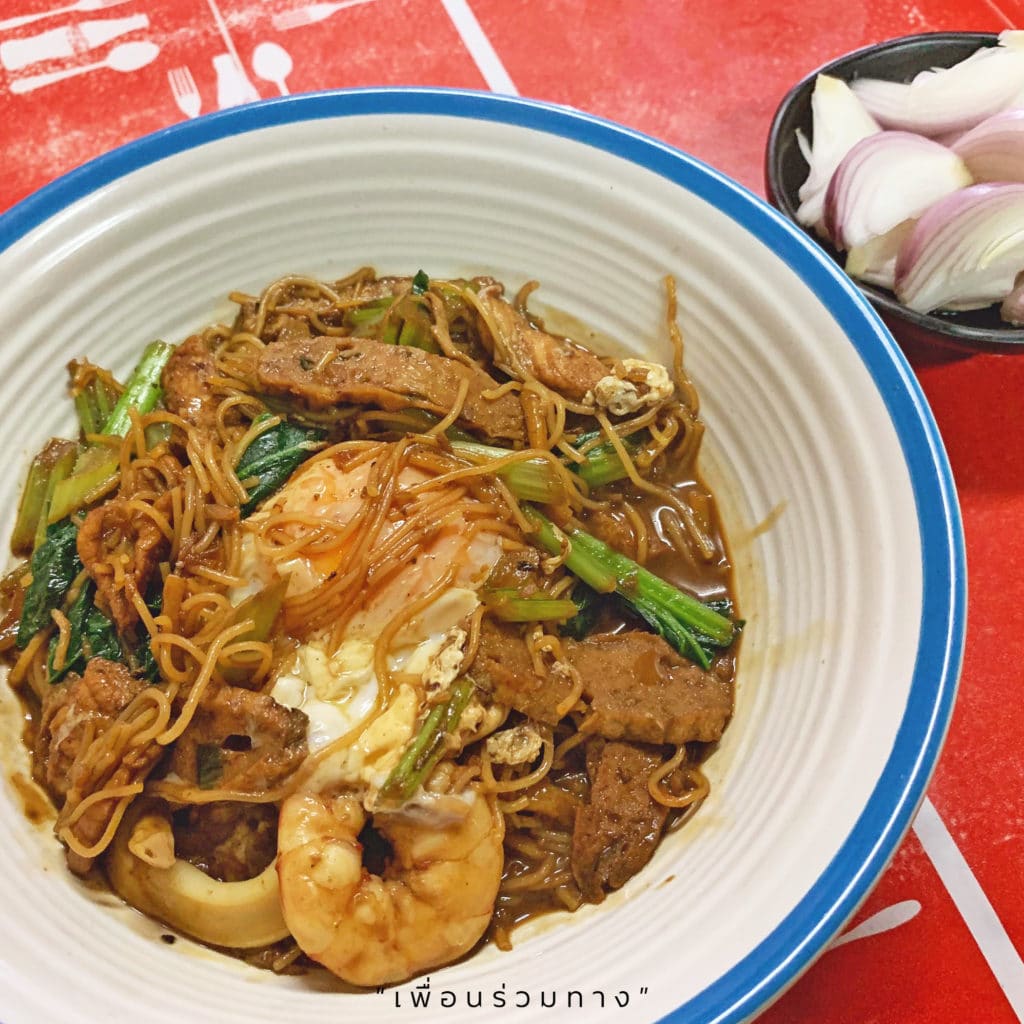
Street art and old buildings complement each other in Phuket old town. Historical buildings line the roads that are the centre of Phuket; such as, Yaowarat, Dibuk, Thalang, Krabi and Phang Nga.
Two types of buildings line these roads; the first being grand mansions; such as, Ban (house) Pitakchinpracha, Ban Luang Amnart Nararak, and the residence of the Phuket governor.
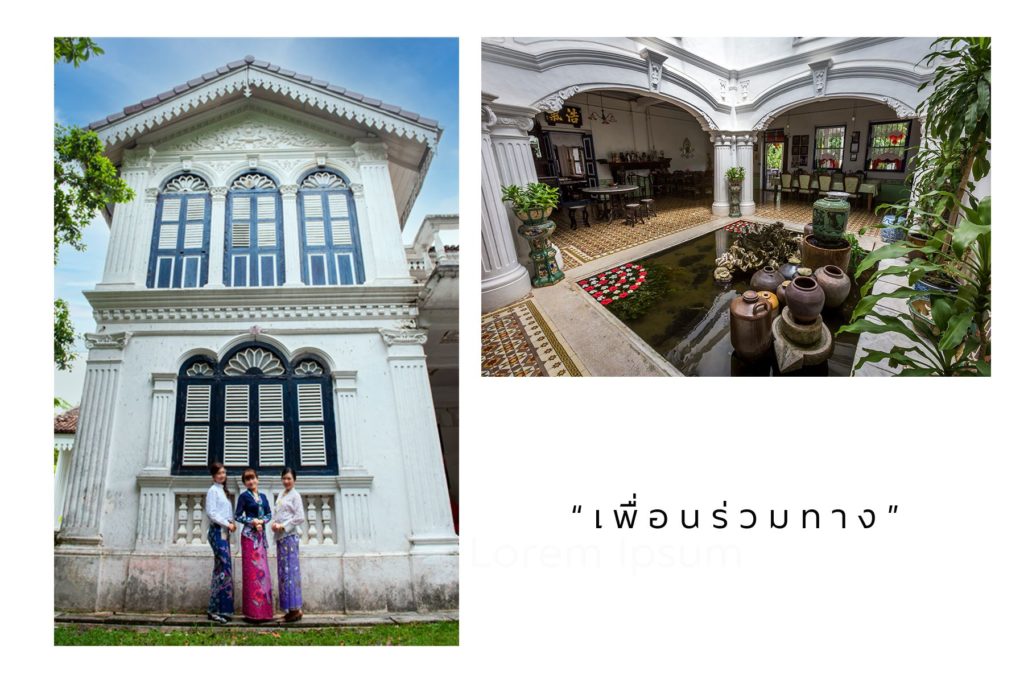
The other type is shophouses. These have mostly been renovated and turned into restaurants, cafes, or boutique hotels. The architectural style of these old buildings is known as Sino-Portuguese – the fusion of Chinese and European heritage.
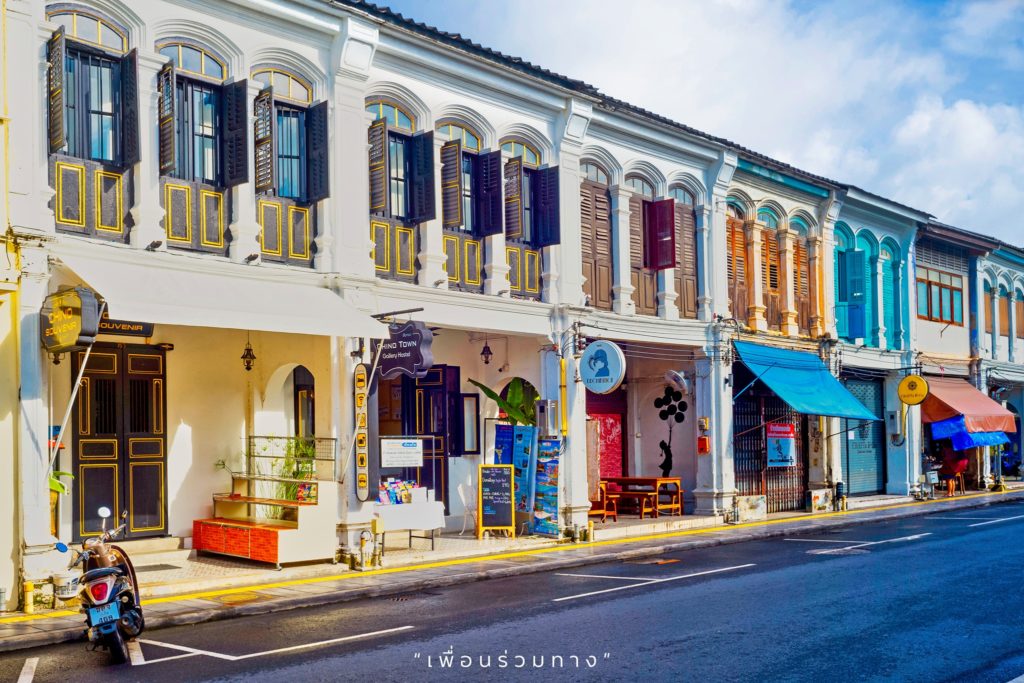
However, a more precise term should be Sino-European,
according to the information at the Phuket Thai Hua Museum as various nationals from the West came to trade in Phuket, thus influencing the locals with the styles of architecture; such as, Neoclassicism and Renaissance.
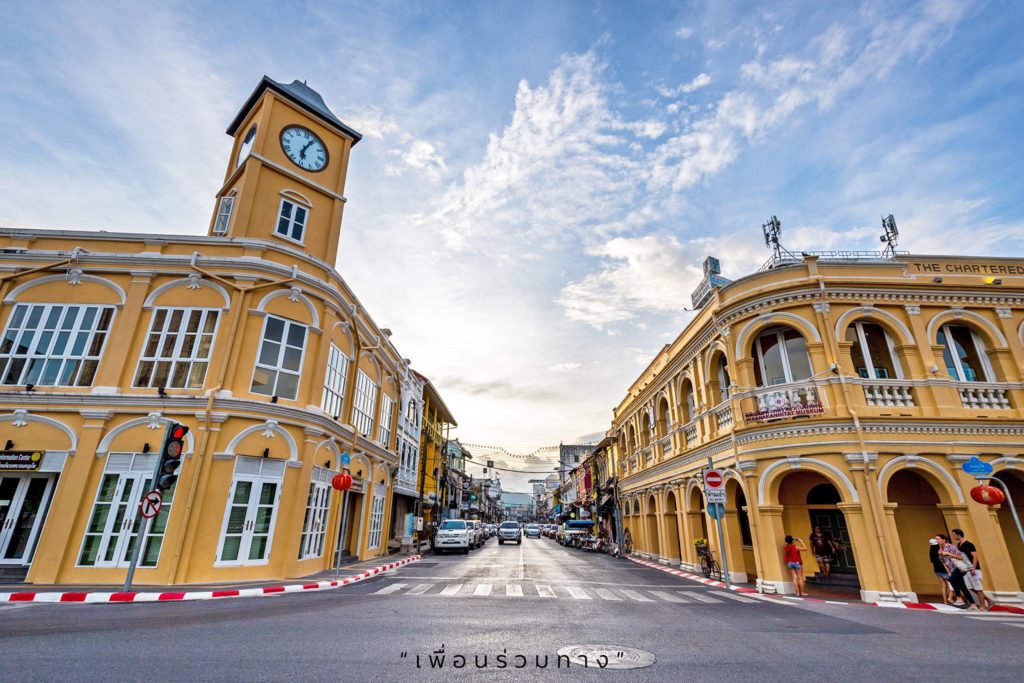
Phuket’s street art has become a big hit among visitors to its old quarter. The colourful graffiti was created by local artists and their international counterparts. See if you can take pictures of all the 20 paintings scattered across the area!
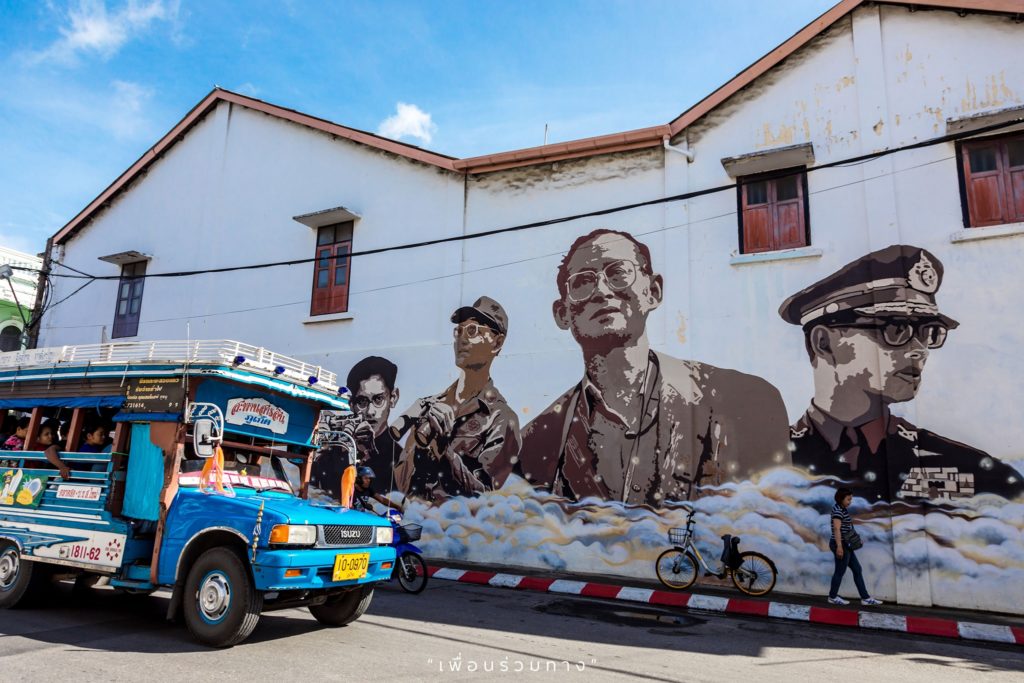
For your convenience, we pin some of the iconic ones here:
![]() https://goo.gl/maps/rSzeEAvsfuEAwGgL7
https://goo.gl/maps/rSzeEAvsfuEAwGgL7
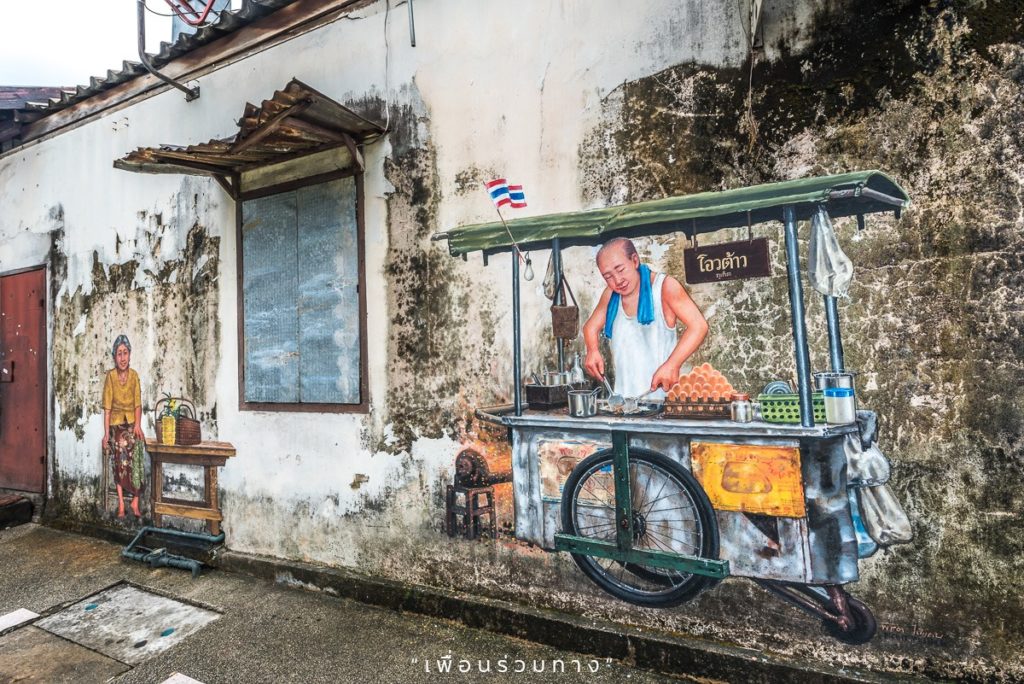
https://goo.gl/maps/NwwfhokQoN9C98u96
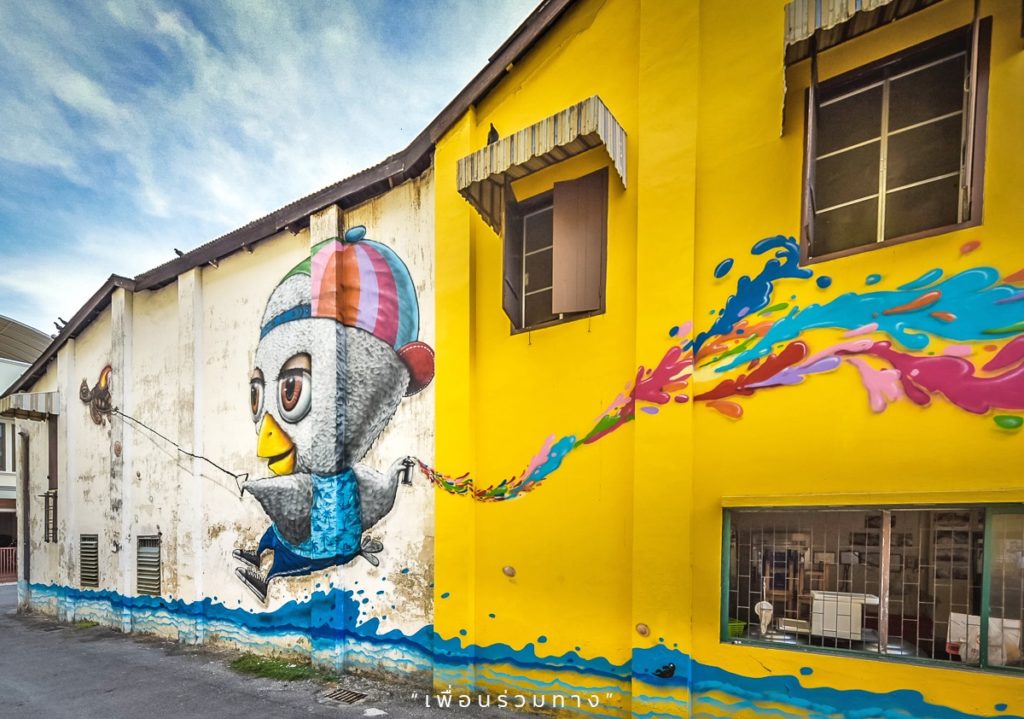
https://g.page/downtown-inn-hotel?share
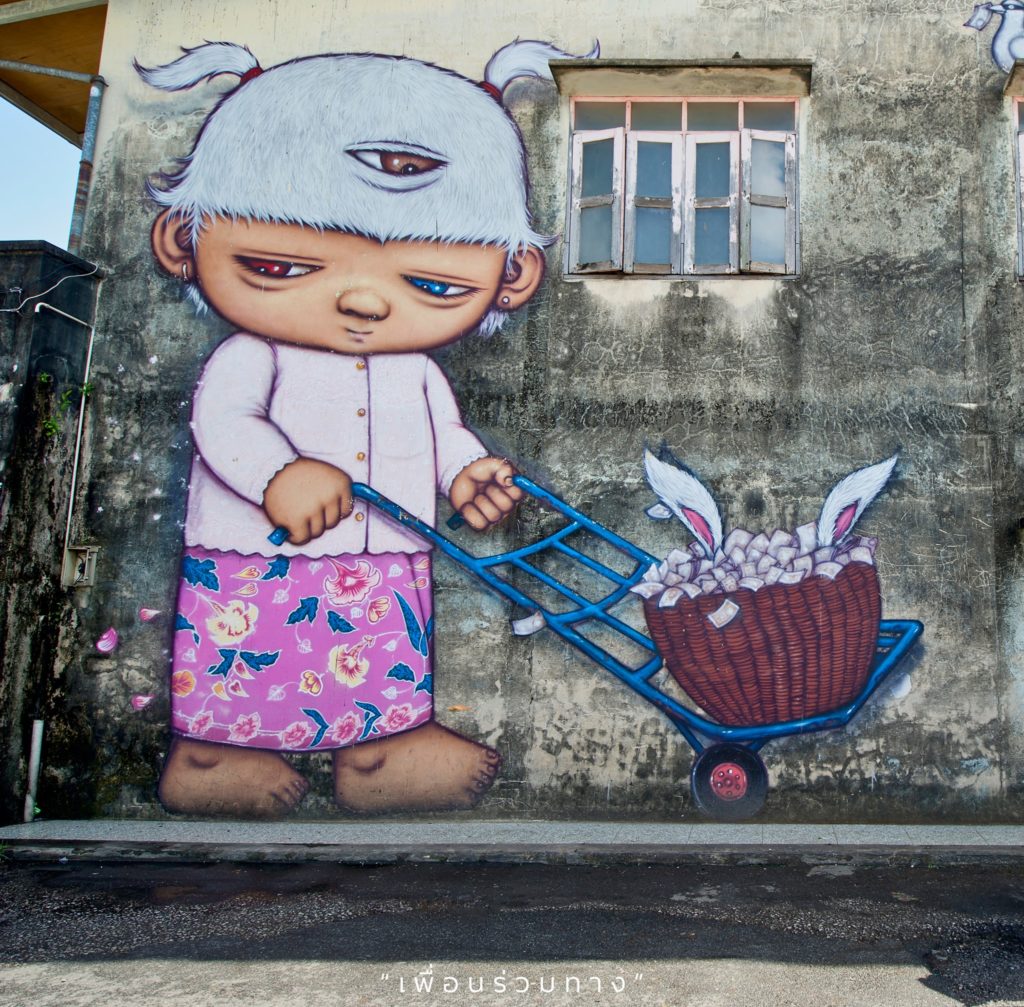
https://goo.gl/maps/SbFNziXgT1m5CDUJ7
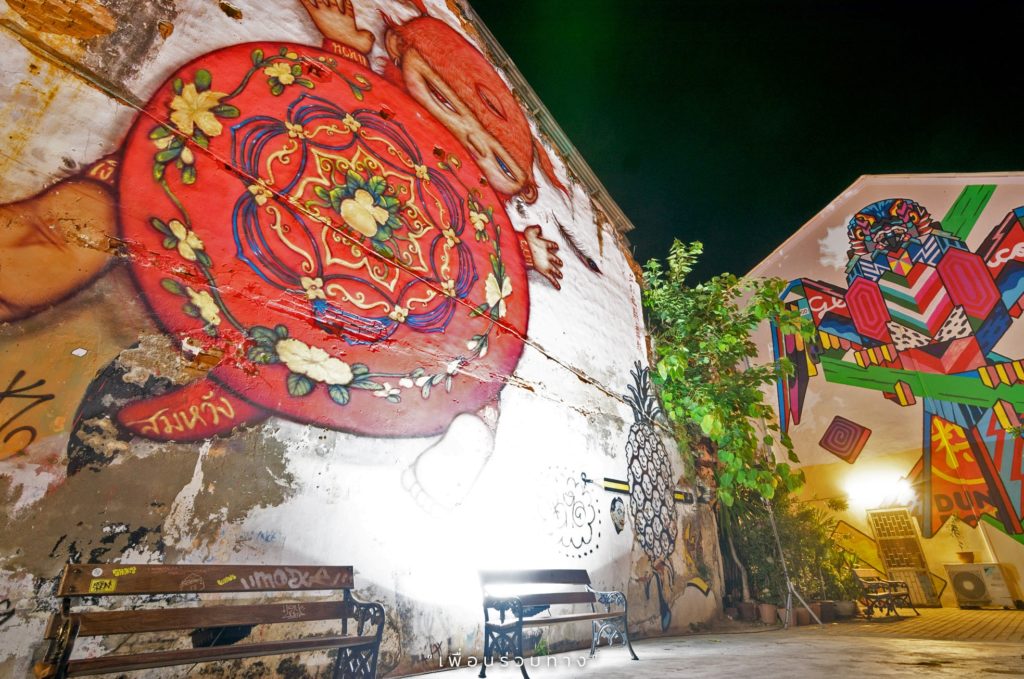
![]() i46 Old Town
i46 Old Town ![]()
This café and souvenir shop is housed in an 80-year-old shophouse and run by a descendant of one of the island’s prominent families. To see more of the house that still tries to maintain its original look, book in advance to take a 30-minute tour conducted by the current owner himself.
 46 Krabi Road, Tambon Talat Nuea, Amphoe Mueang, Phuket
46 Krabi Road, Tambon Talat Nuea, Amphoe Mueang, Phuket  Open Sunday-Friday (closed Saturdays) from 10:00 a.m. – 4:00 p.m.
Open Sunday-Friday (closed Saturdays) from 10:00 a.m. – 4:00 p.m.  08 1895 4795
08 1895 4795  https://goo.gl/maps/xe43h4bRKZAd5piG7
https://goo.gl/maps/xe43h4bRKZAd5piG7
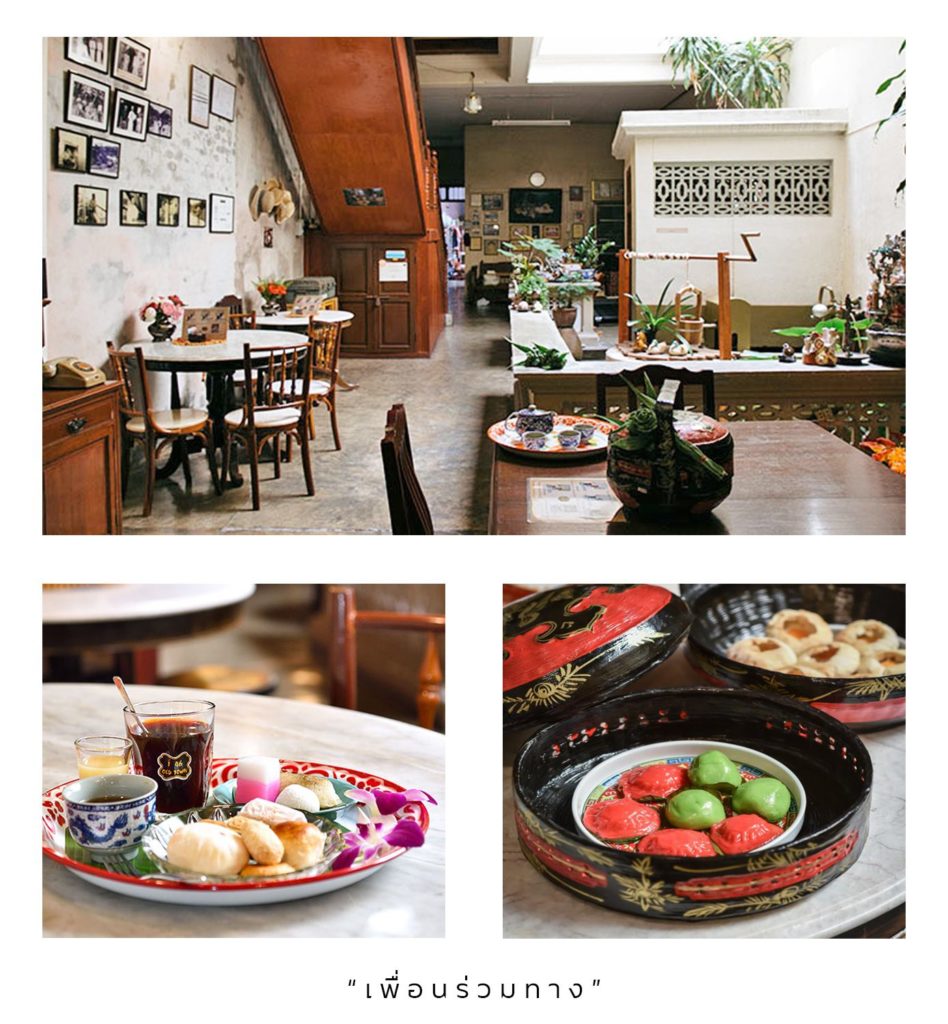
![]() Tunk-ka Cafe
Tunk-ka Cafe ![]()
A hillside restaurant on top of Khao Rang in Phuket Town, Tunk-ka café is a favourite eatery for both locals and visitors – a perfect place to end a perfect day’s tour of the old town.
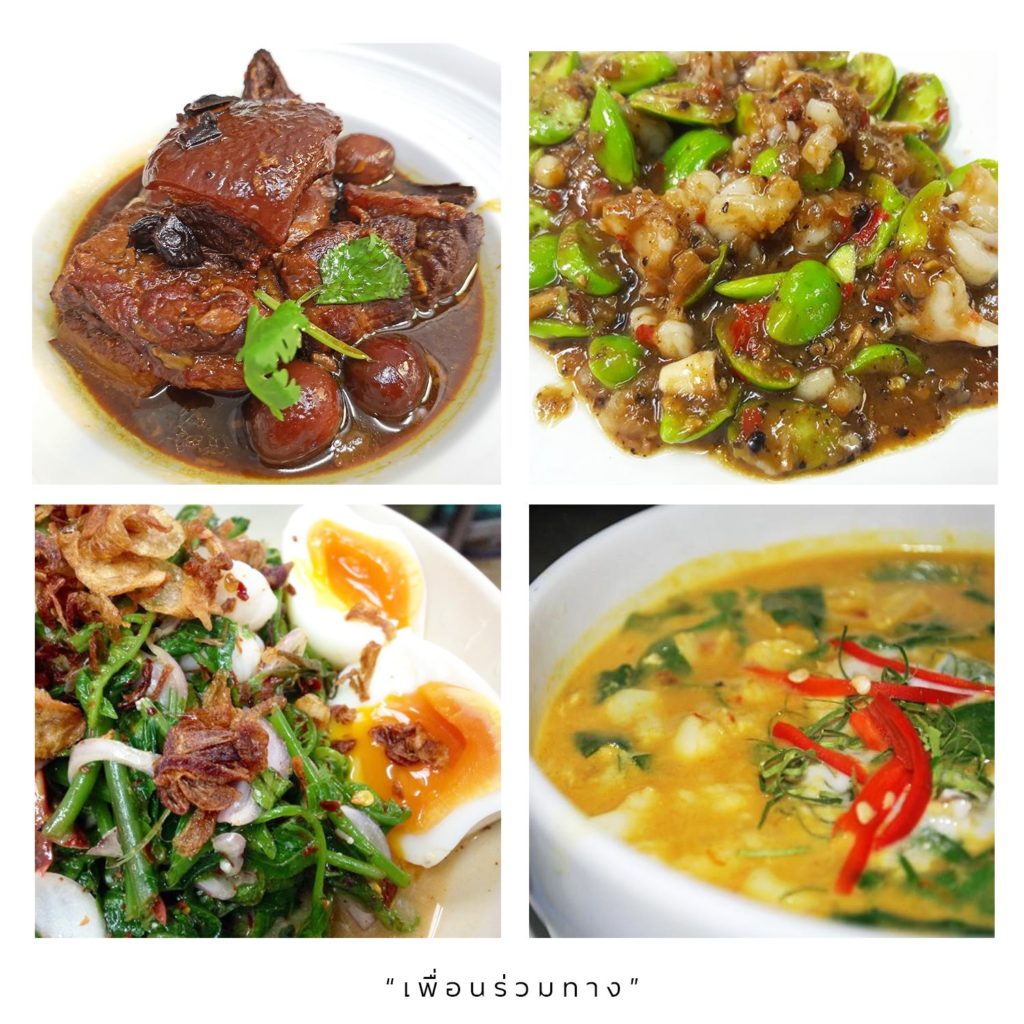
The restaurant has striking panoramic views of Phuket city and serves tasty local specialties.
 Khosimbi Road, Tambon Wichit, Amphoe Mueang, Phuket
Khosimbi Road, Tambon Wichit, Amphoe Mueang, Phuket  Open daily from 11:00 a.m. – 9:00 p.m.
Open daily from 11:00 a.m. – 9:00 p.m.  06 1978 2549
06 1978 2549  https://g.page/tunkkacafe?share
https://g.page/tunkkacafe?share
